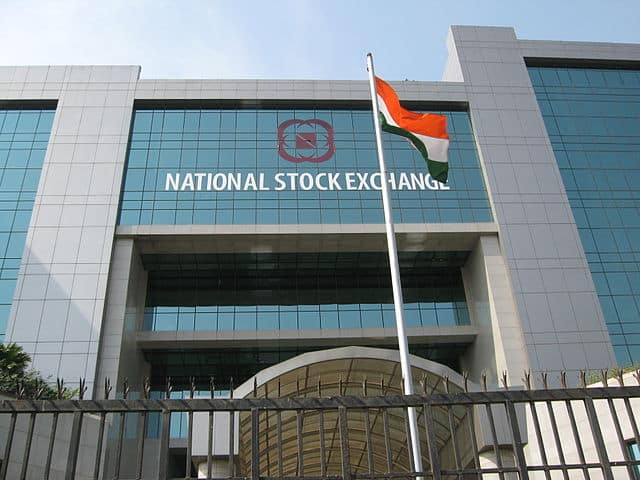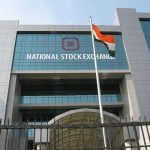
India is an emerging economy and has great potential to grow rapidly, the same is also true for the Indian share market. The Indian share market has created wealth for prudent investors for decades. And it is attracting more investors now than before.
A few decades ago the share market was the toy of rich mans’ hands. But due to the advancement of technology and access of technology to the masses, common people are also getting attracted to the stock market and are benefiting from this great opportunity.
The equity market in India has a proven record of outperforming other asset classes in long run. One just needs patience and some knowledge to make the best out of it.
Indian Share Market an Overview
The share market in India is represented mainly by two stock exchanges the National Stock Exchange (NSE) and the Bombay Stock Exchange (BSE).
Previously there were 22 stock exchanges recognised by the Government of India under the Securities Contracts (Regulation) Act, 1956. These were the regional stock exchanges such as Hyderabad stock exchange, Jaipur stock exchange, Madras stock exchange etc. but most of them are defunct now.
Mostly these regional stock exchanges have been closed in the last few years under the exit policy of SEBI.
Now the two stock exchanges BSE and NSE are the biggest and most popular stock exchanges in India and attract almost all the stock trading volume in the country. At these exchanges, trading happens in digital form. Both these exchanges have their own electronic automated trading system. These systems are one of the most advance and fastest in the world.
There are also two central depositories the National Securities Depository Limited (NSDL) and Central Depository Services Limited (CDSL). These depositories maintain a record of the shares in India in digital form.
There are several members of central depositories called Depository Participants or DP in short. Investors need to open a Demat account with any of these DPs to avail the services of central depositories.
The Demat account hold record for all your shares in digital form same as bank accounts do for money. Almost all major banks, brokers, and several NBFCs work as DP. An investor needs to open a Demat account with any Depository Participant of his choice. With this Demat account, investors connect with the central depository.
Before the existence of central depositories stock trading used to happen in physical form. At that time, shares were exchanged between buyer and seller in the form of a physical share document. Which used to have many risks involved with it such as bad delivery, fake share certificate, torn or patched certificates, and delayed delivery of certificates etc.
With the introduction of central depositories that is NSDL and later CDSL, these risks involved with the physical certificates got eliminated. The NSDL was introduced in 1996. Later in 1999 second depository that is CDSL was introduced based on the same principles.
The NSE and BSE
The National Stock Exchange of India Ltd (NSE) and Bombay Stock Exchange (BSE) are the two biggest stock exchanges in India. BSE is the oldest stock exchange in India as well as in Asia. It is in existence since 1875 while NSE started trading in 1994. Both Bombay Stock Exchange and National Stock Exchange are located in Mumbai.
The NSE was the first Stock Exchange in India to use a computerised, screen-based electronic trading system, later BSE followed the all computerised digital trading system.
Now both the exchanges follow the automated digital trading methods, named the BOLT (BSE On-Line Trading) and NEAT (National Exchange for Automated Trading) System.
Both the exchanges follow the computerised open limit order matching mechanism to match and execute an order. In this mechanism, all the buy orders are automatically matched against the matching sell limit orders.
BSE has more than 5500 companies listed on it which is the most for any stock exchange in the world. While NSE has about 2000 companies listed on it.
Of all the companies listed on BSE about half of them do not trade regularly and shares of these companies are very illiquid. On both BSE and NSE top 500 listed firms account for about 90% of the market capitalization of these exchanges.
On National Stock Exchange however number of listed firms are far less than the Bombay Stock Exchange but its trade volume and daily turnover is much more than the BSE.
The regular trading hours on both the exchanges are 9:15 AM – 3:30 PM Monday to Friday. The exchanges remain closed on Saturdays, Sundays, on the government holidays and holidays declared by the exchanges.
Major INDEXES
Sensex and Nifty are the two most widely covered market indexes in both domestic as well as international media.
‘Sensex’ or ‘S&P BSE Sensex’ is the major index of the Bombay Stock Exchange while ‘Nifty 50’ is the benchmark index of the National Stock Exchange.
Sensex comprises 30 well established bluechip companies of different sectors while Nifty is a composite index of 50 well-established companies from all major sectors.
Both Sensex and Nifty are calculated using ‘free-float market capitalization method.
There are also several other less popular indexes on both the exchanges such as Nifty Midcap 100, Nifty 500, S&P BSE 100, S&P BSE 500 Etc. There are few other sector-wise indexes representing a particular sector such as Nifty Auto, S&P BSE Bankex, S&P BSE FMCG, Nifty IT, etc.
Settlement Cycle in Indian Share Market
At the NSE and BSE, stock trades are settled on a rolling settlement of T+1 basis, that is, all trades settle on the next working day. Settlement is when securities and funds are exchanged between buyers and sellers.
T stands for trading day, so any trade taking place on the trading day will be settled the next day. For example, any trade taking place on Monday will be settled on Tuesday.
For arriving at the settlement day all intervening holidays are excluded, which include Saturdays, Sundays, BSE/NSE holidays, government holidays, bank holidays, etc.
Earlier, this settlement was done on a T+2 basis, but since October 2023, India has moved to a complete T+1 settlement for all the scripts in the Indian stock market.
Market Regulator
The Indian securities market is regulated by the Securities and Exchange Board of India (SEBI). The agency was given the status of a statutory body after the introduction of the Securities and Exchange Board of India Act, 1992.
SEBI is the primary body to regulate the activities of the stock exchanges in India. It also regulates the activities of share brokers/sub-brokers, depositories, promoters of companies, underwriters, retail bankers, institutional investors, foreign institutional investors investing in India, portfolio managers, investment advisors etc.
SEBI is responsible for the prevention of fraudulent trading practices such as insider trading and price rigging to make the Indian securities market fair and equal playing field. SEBI has the authority to enquire companies and investors regarding their trades in the Indian share market. It often imposes penalties on fraudulent traders and companies if find them involved in any illegal trading activity. It has the right to ban people from accessing the market and trading temporarily or permanently.
SEBI also handles complaints of investors’ against brokers, depositories, depository participants, companies etc. Regulation of activities of mutual funds and venture capital is also done by SEBI.
The market regulator SEBI also runs several educational programmes and ad campaigns to make investors aware of common frauds and risks of the securities market.
SEBI also promote development activities in the capital market. In short, the role of SEBI is to protect the interest of investors and make the Indian capital market a safe and evolving market.



